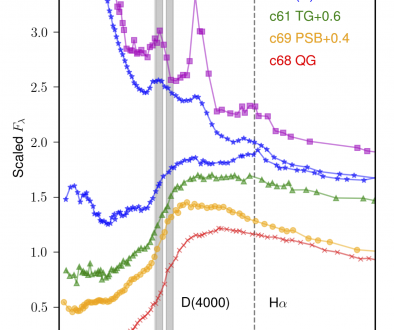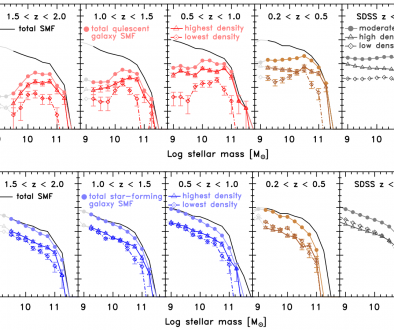Straatman 2015 Summary
Recently, with ZFOURGE we presented the discovery of a substantial population of massive quiescent galaxies at Z ~ 4, when the universe was only ~1.5 billion years old (http://zfourge.tamu.edu/publications/straatman-2014-summary/). At high redshift, quiescent galaxies are very different from the large elliptical early types that we observe in the universe today. In particular they have been found to become smaller and smaller the further we look back in time. Here we use HST/WFC3/F160W (1.6 micron) imaging from CANDELS to study the sizes of the galaxies at Z ~ 4. Given the high redshift, this corresponds to rest-frame ultraviolet light.
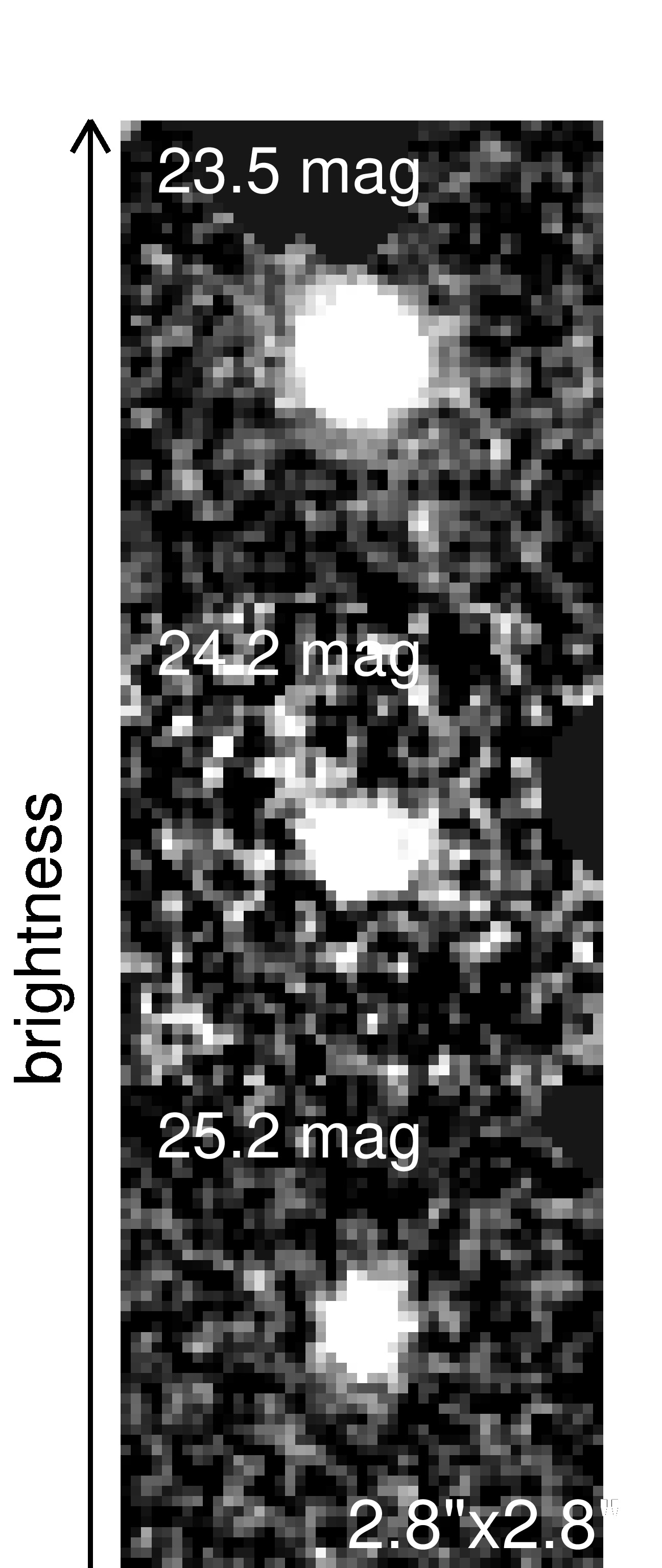
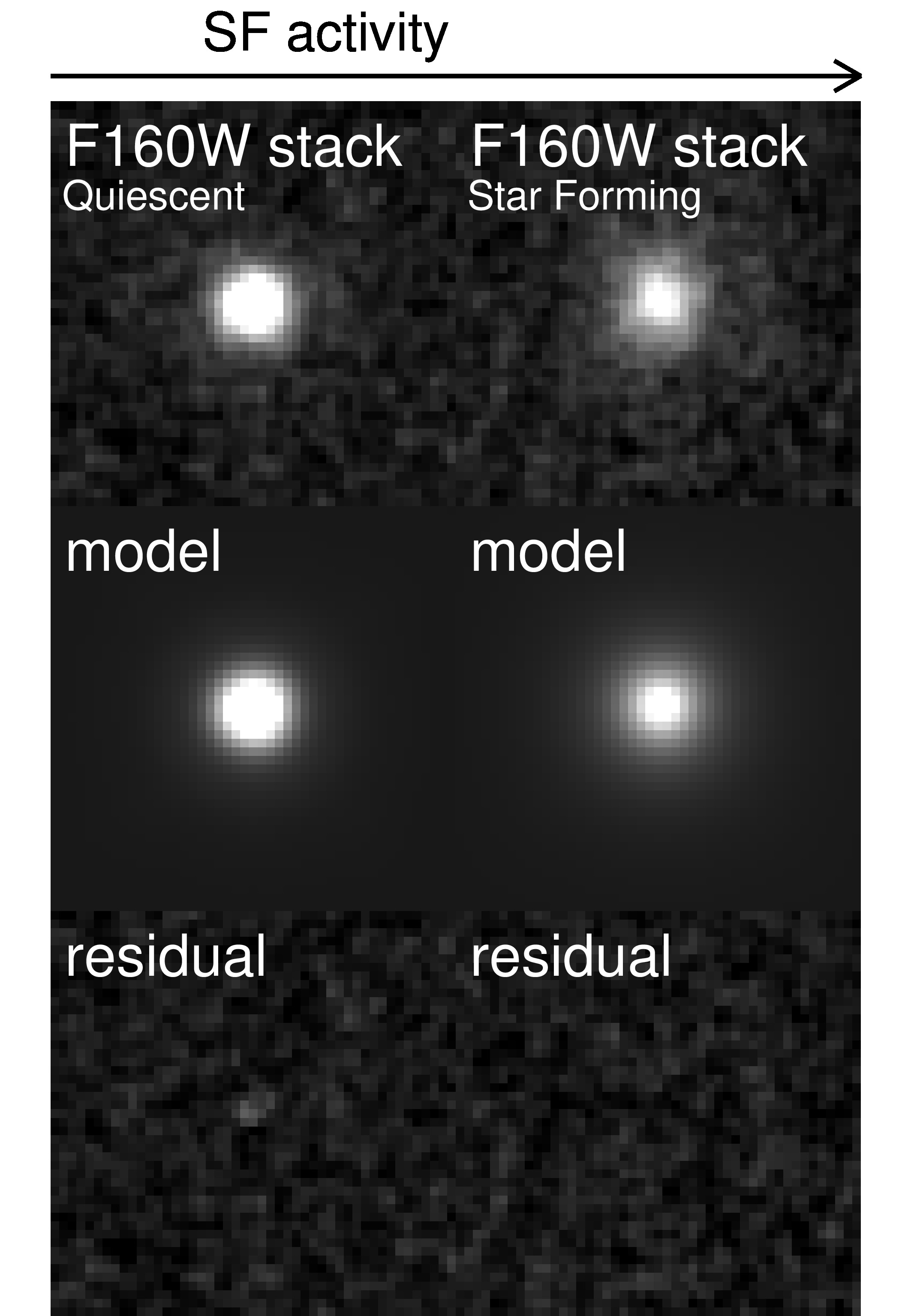
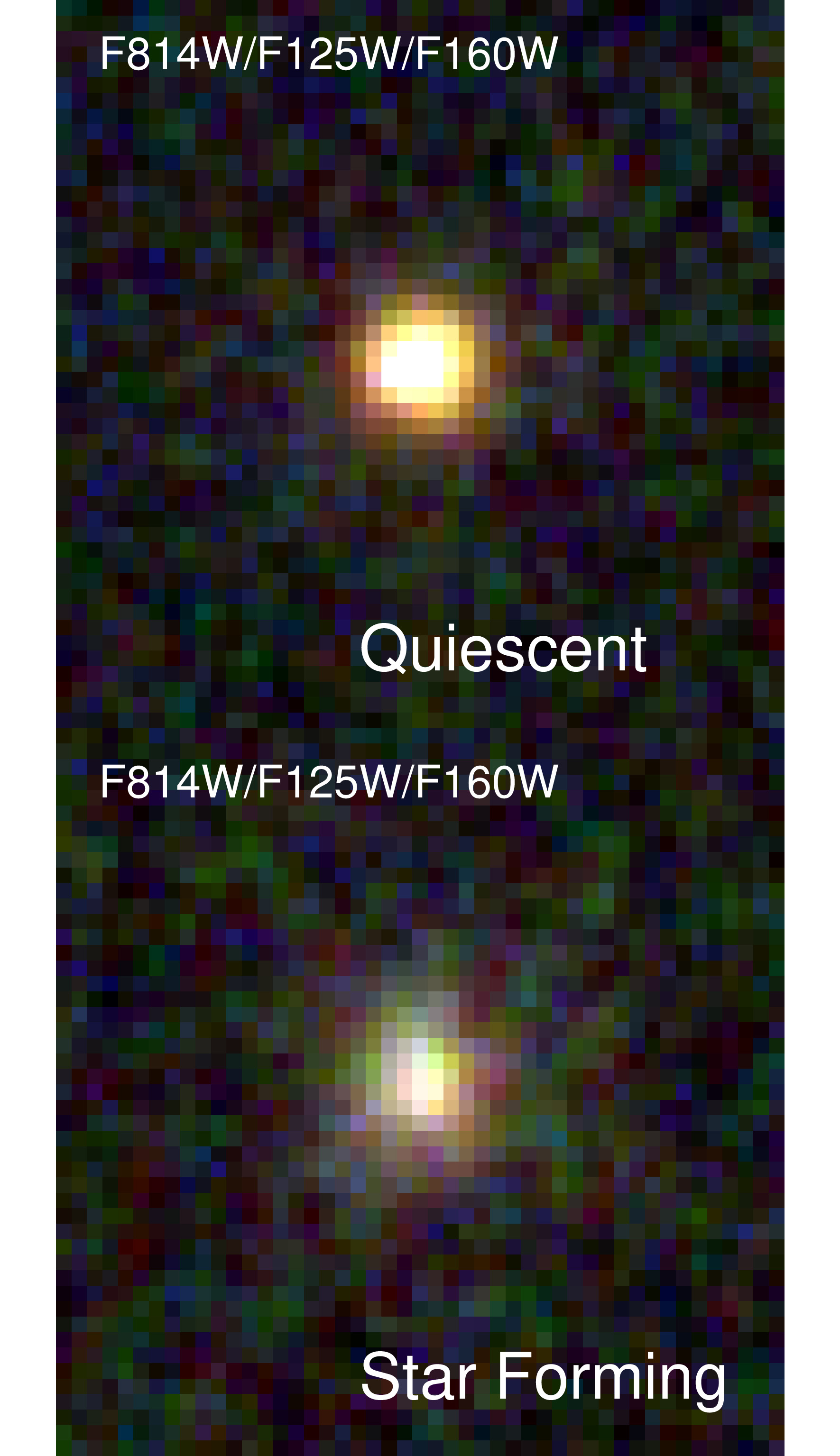
In the left panel of this Figure we show examples of the F160W images of the galaxies, with increasing brightness. In the second panel we show stacks of all the Z ~ 4 star-forming and quiescent galaxies for which we have F160W imaging. This is a way of improving the signal. The light of the quiescent galaxy stack is more centrally concentrated, in agreement with what has been seen already at lower high redshifts. We fit light models to the data with the software GALFIT, the result of which is also shown along with the residuals if we compare originals and models. The average effective size of the quiescent galaxies is 0.62 +/- 0.18 Kpc, which is 6x smaller than at Z ~ 0. The average size of star-forming galaxies at Z ~ 4 is 2.0 +/- 0.60 Kpc, roughly 3x larger than the quiescent galaxies, but also smaller than late-type star-forming galaxies at Z ~ 0 by somewhat more than a factor of 2x. The last panel is a color composite.
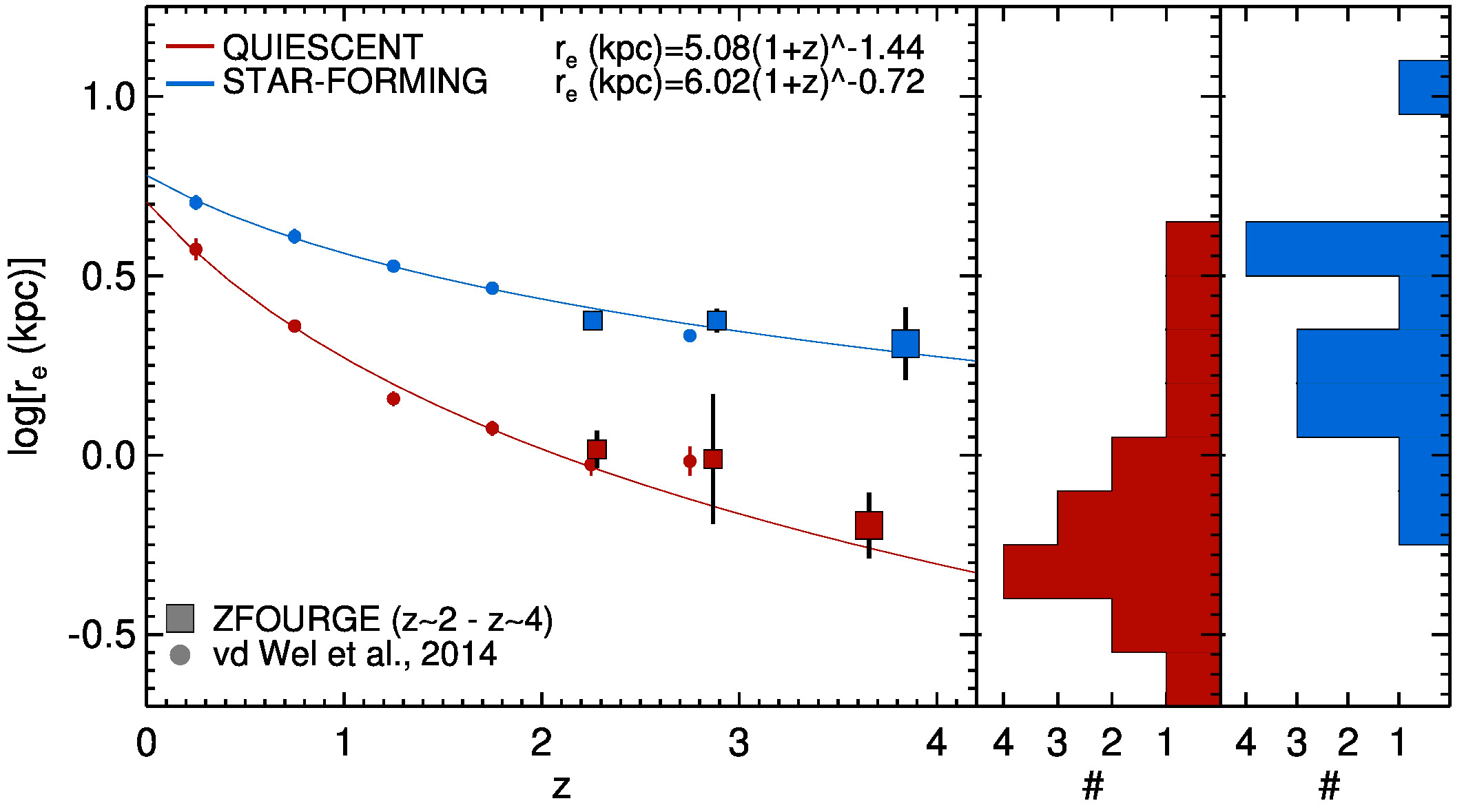
Here we show how the sizes compare with similarly massive galaxies at various lower redshifts. Clearly, the Z ~ 4 confirms a trend of decreasing size with increasing redshift, i.e., looking back to earlier and earlier times.
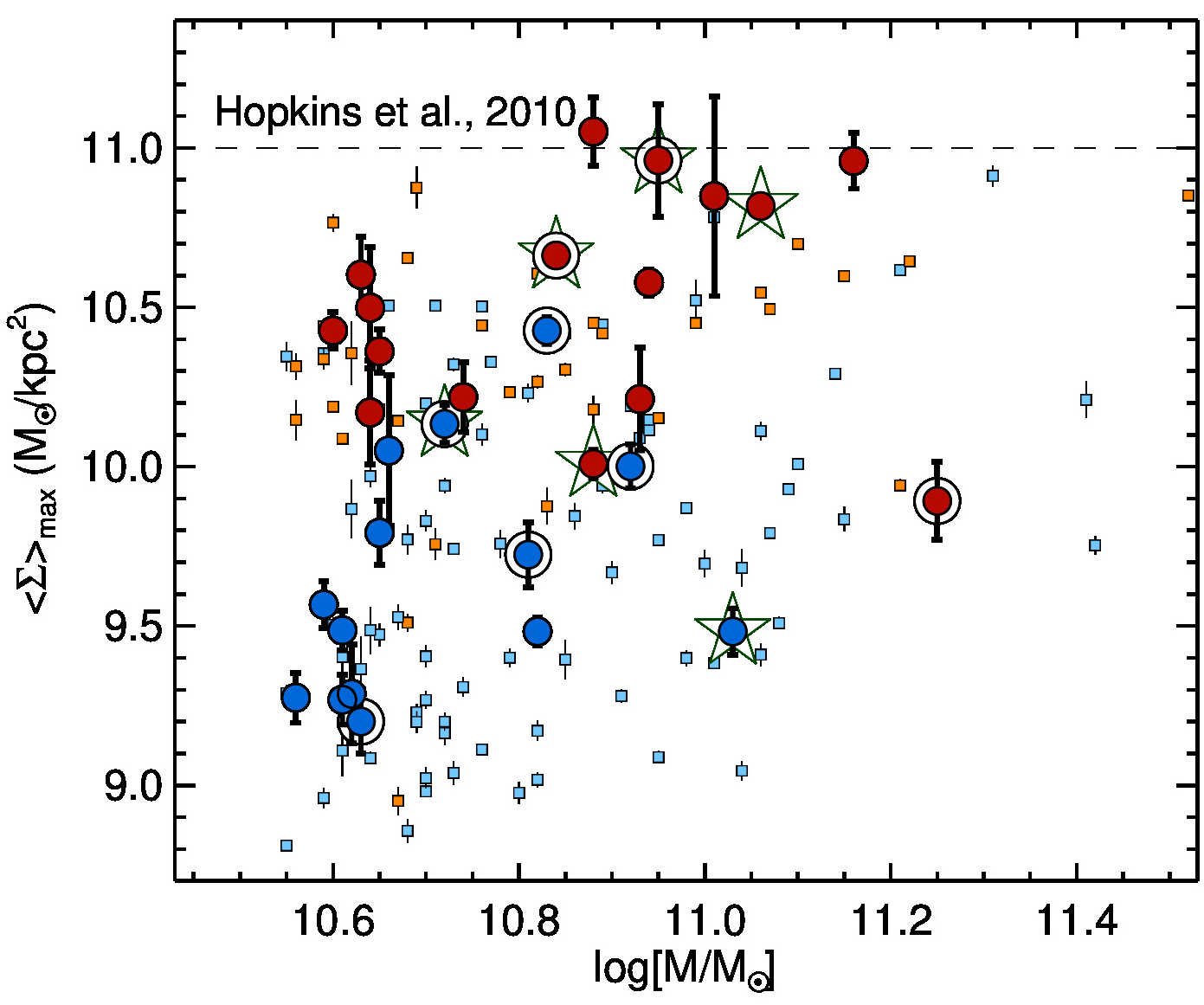
The difference in average size between star-forming and quiescent galaxies is remarkable. The quiescent galaxies are extremely compact. As shown in this Figure, they have high stellar mass densities, with some even approaching the empirical limit found by Hopkins et al., 2010, i.e, more compact sources are generally not found in the universe. Interestingly, the existence of compact quiescent galaxies at Z ~ 4 is also not predicted by computer simulations. Their formation is still a riddle: less than two billion years later, at Z ~ 2, the average size of quiescent galaxies is not much larger: roughly a factor of 2. Surely then we should have found some star-forming galaxies in this sample already evolving into compact quiescent galaxies at later times! An explanation could be that this evolution happens in a very short time, so that it’s difficult to observe them at just the right moment. Another possibility is that we simply did not observe them at the right wavelength, for example if they have central dust-obscured ongoing star-formation that can only be revealed in the infrared. New instruments, such as ALMA, will shed more light on this.
